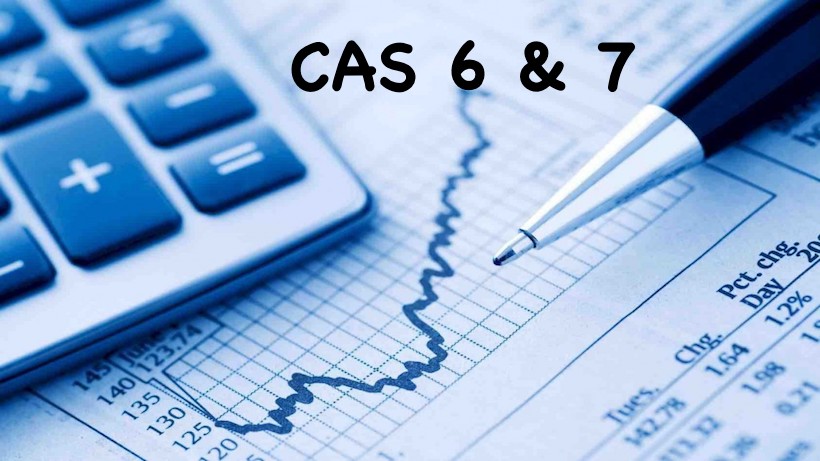Detailed Analysis of CAS 6 and 7 – Treatment of Material Cost & Labour Cost, The major content of costing is all about how to calculate the cost of various inputs. Two of the most important costs are material cost & labour cost. Find complete details for Cost Accounting Standard 6 – Material Cost and also find all details for Cost Accounting Standard 7 – Employee Cost. Let us do a deep study on each of these.
CAS 6 and 7 – Treatment of Material Cost & Labour Cost
Cost Accounting Standard 6 – Material Cost
Material cost is the significant constituent of the total cost of any product. It constitutes 40% to 80% of the total cost. The percentages may differ from industry to industry. But for manufacturing sector the material costs are of greatest significance. Inventory also constitutes a vital element in the Working Capital. So it is treated as equivalent to cash. Therefore the analysis and control on Material Cost is very important.
- The standard CAS 6 prescribes principles and methods of determining the Material Cost.
- Material for the purpose of this standard includes raw materials, process materials, additives, manufactured / bought out components, sub – assemblies, accessories, semi finished goods, consumable stores, spares and other indirect materials.
- However, this standard does not deal with Packing Materials as a separate standard is being issued on the subject by the Institute.
- The Standard deals with the following issues.
- Principles of Valuation of receipt and issue of materials.
- Assignment of material cost to cost objects.
- This standard targets to bring uniformity and consistency in the principles and methods of determining the material cost with a reasonable degree of accuracy.
- This standard should be applied to cost statements which require classification, measurement, assignment, presentation and disclosure of material costs including those requiring attestation.
- Quantity and rates of major items (which forms at least 5% of the total cost of materials) shall be disclosed.
- Disclosures may be made in the body of the Cost statement or as a foot note or as a separate schedule to the main statement.
- This standard shall be applicable to all Cost Statements prepared on or after 1st April 2010.
Must Read – Weighted Average Cost of Capital
Cost Accounting Standard 7 – Employee Cost
Labour is an important element of cost and for overall cost control and cost reduction, Labour Cost is of paramount importance. Labour Cost is also called as Employee Cost. However, for control and reduction of Labour Cost, it is essential to compute the Labour Cost in a scientific manner and hence there should be proper systems and processes and documentation, which will help computation of Labour Cost in a scientific manner. It should be remembered that Labour is not like material as there is a human aspect involved in it. Therefore, there should be a comprehensive study of all related aspects of Labour Cost and then only computation and control over the same will be possible. Attention should also be paid to the productivity aspect. Low productivity results in higher Labour Cost per unit while higher productivity will reduce the Labour Cost per unit.
- This standard deals with the principles and methods to classify, measure and assign employee cost to determine the cost of a product or a service and also about its disclosure in the cost statements.
- In order to bring uniformity and consistency in the principles and methods of determining the employee cost with a reasonable degree of accuracy, this standard has been established by The Institute.
- This standard should be applied to cost statements which require classification, measurement, assignment, presentation and disclosure of material costs including those requiring attestation.
- Employee cost will include payments made in cash or kind.
- Direct employee cost should be presented as a separate cost head while indirect employee cost should be presented as a part of overheads in the cost statements.
- Disclosures may be made in the body of the Cost statement or as a footnote or as a separate schedule to the main statement.
Advertisement
So, when we are on to preparing a Cost Statement, we must follow these Cost Accounting Standards which shows the treatment of these two major costs forming part of the overall expenses any organization, that are, material cost & labour cost.
Must Read – Profitability Index (PI) Detailed Analysis
This will ensure uniformity of the various Cost Statements prepared for different entities & will also help in displaying a true & fair picture of the cost allocation in any organization.

What are the principles of valuation of receipt materials?
Plz advise how to stdy cost?? Exam oriented ??
Well, Anjali you can make a plan according to the time you have for preparations. If you have a good amount of time with you, then practice as much as you can. First you should read the theory & then go onto solving the practical questions.